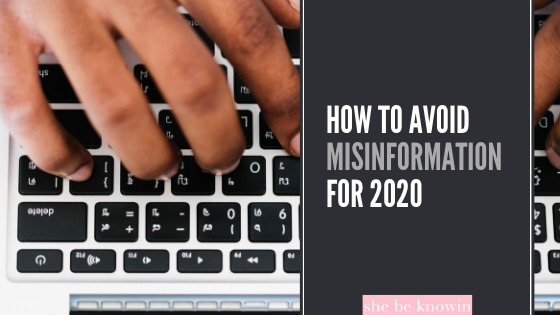Before we begin, I am more than aware that we are still in 2019. However, with an increasing number of Democrats declaring their candidacy and social media platforms not having a viable answer to social media interference, it is important now more than ever that we are vigilant with information we consume and consider to be fact. In a report produced for the Senate Intelligence Committee, an extensive social media counterintelligence effort targeted at African Americans was revealed with the warning that “active and ongoing interference operations” continue on social media platforms. If you seek to be more educated in an effort to be a well-informed voter and general human, here are some tips to help you sift through social media information.
0. Recognize that cognitive bias is real.
We are all going to have people we like and are unwilling to accept negative facts about. (Hey Beto!) And very early in the primary discussions, there are dissenting opinions about your fave that you are ready to dismiss as #fakenews or just people being hasty to judge. Be sure to take a step back and research a few news sources before completely dismissing the news outright. Especially on Twitter and Facebook, people will be spouting ill-informed opinions and you can’t help that, but it’s up to you to be fully informed nevertheless.
1. Beware of the Russian bot.
This is mostly for Twitter since that’s where I spend a lot of my time and where a lot of information is being spewed. This article from Mother Jones gives some very helpful ways to spot a Russian bot, but the biggest one that stood out to me was “unlikely popularity.” If you see someone with thousands of retweets but only 10 followers, this is likely a Russian bot. It only takes a second to take a glance at their profile before you continue to share the information.
2. Fact checking is your friend.
Snopes.com is a very good resource for checking out trending news, even if it appears to come from a seemingly credible source. A few months ago when the Presidential Alert went out, John McAfee (founder of McAfee security) tweeted about how the alert system gave the government access to our phones. While John seemed to be someone to trust on matters of cybersecurity, a quick search on Snopes proved that he was incorrect. Again, a very quick check can help you ensure you’re consuming correct information and not adding to the amalgamation of misinformation on the interwebs.
3. Seek out different sources of information (aside from social media.)
In a 2017 Pew Research study, it was found that 35% of Americans got news from social media (compared to 36% from news websites.) Even aside from social media, I often research different news websites and sources to get several points of view at a glance. In addition to being a sustaining member of my local NPR station (hey KERA!), I also subscribe to Ozy’s Presidential Brief in addition to other news briefs. I also use the Newsvoice app to get a glance of the same story from several news sources from center- to right- and left-leaning.
4. Don’t share news solely based on the headline.
I have often been guilty of this and aim to do better. At the end of the day, internet writers are seeking to get people to click and visit their websites, so they often choose the most sensational headline that will accomplish their goal. Click on the link for yourself and ensure it is a credible source before sharing. I also try to share a synopsis or fact in my message so if others don’t click the link, they still receive an honest representation of what the article entails.
These are 5 easy tips we can all implement to avoid consuming and perpetuating misinformation of social media. No matter our political leanings, it is important to make sure that we are all doing our part to be fully and correctly informed in our everyday life. I hope these tips help you to do so!


